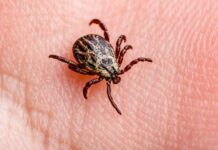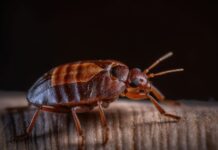Cleveland gardens host a bustling community of insects, each playing distinct roles—some beneficial, some harmful, and others merely strange-looking. Recognizing these creatures and understanding their impact is essential for maintaining a healthy garden ecosystem. Let’s explore some common garden insects in Cleveland, distinguishing between the good, the bad, and the peculiar.
The Beneficial:
1. Ladybugs (Coccinellidae):
- Appearance: Small, round beetles with bright colors and distinct spots.
- Role: Valuable predators that feed on aphids, mites, and other pests, aiding in natural pest control.
2. Praying Mantises (Mantodea):
- Appearance: Long-bodied insects with prominent forelegs used for catching prey.
- Role: Voracious predators that consume a variety of insects, contributing to pest control in gardens.
3. Lacewings (Chrysopidae):
- Appearance: Delicate, green insects with translucent wings.
- Role: Their larvae prey on aphids, mites, and small insects, aiding in pest management.
The Pests:
1. Aphids (Aphidoidea):
- Appearance: Small, soft-bodied insects in various colors like green, black, or pink.
- Impact: Feed on plant sap, causing stunted growth and transmitting diseases.
2. Japanese Beetles (Popillia japonica):
- Appearance: Metallic green with copper-brown wing covers.
- Damage: They skeletonize leaves, damaging foliage and flowers of many plants.
3. Cabbage Worms (Pieris rapae):
- Appearance: Green caterpillars with faint yellow stripes.
- Impact: Feed on cabbage, broccoli, and other brassicas, causing significant damage to leaves.
The Peculiar:
1. Stink Bugs (Pentatomidae):
- Appearance: Shield-shaped bugs, often brown or green in color.
- Behavior: Emit a foul odor as a defense mechanism when threatened.
2. Wheel Bugs (Arilus cristatus):
- Appearance: Distinctive, spiny, and wheel-shaped structures on their backs.
- Predatory Role: Feeds on caterpillars and other insects, contributing to pest control.
3. Walking Sticks (Phasmatodea):
- Appearance: Long and slender insects resembling twigs or branches.
- Camouflage: Blend with their surroundings to avoid predators.
Maintaining Balance:
- Observation: Regularly inspect plants for signs of damage and insect presence.
- Integrated Pest Management (IPM): Use a combination of cultural, biological, and mechanical controls to manage pests, reducing reliance on chemical treatments.
- Support Beneficial Insects: Provide habitats and diverse plants to attract beneficial insects that aid in pest control.
Understanding and identifying these common garden insects in Cleveland empower gardeners to cultivate a thriving ecosystem by fostering beneficial insects, managing pests effectively, and embracing the diverse world of garden insects.










